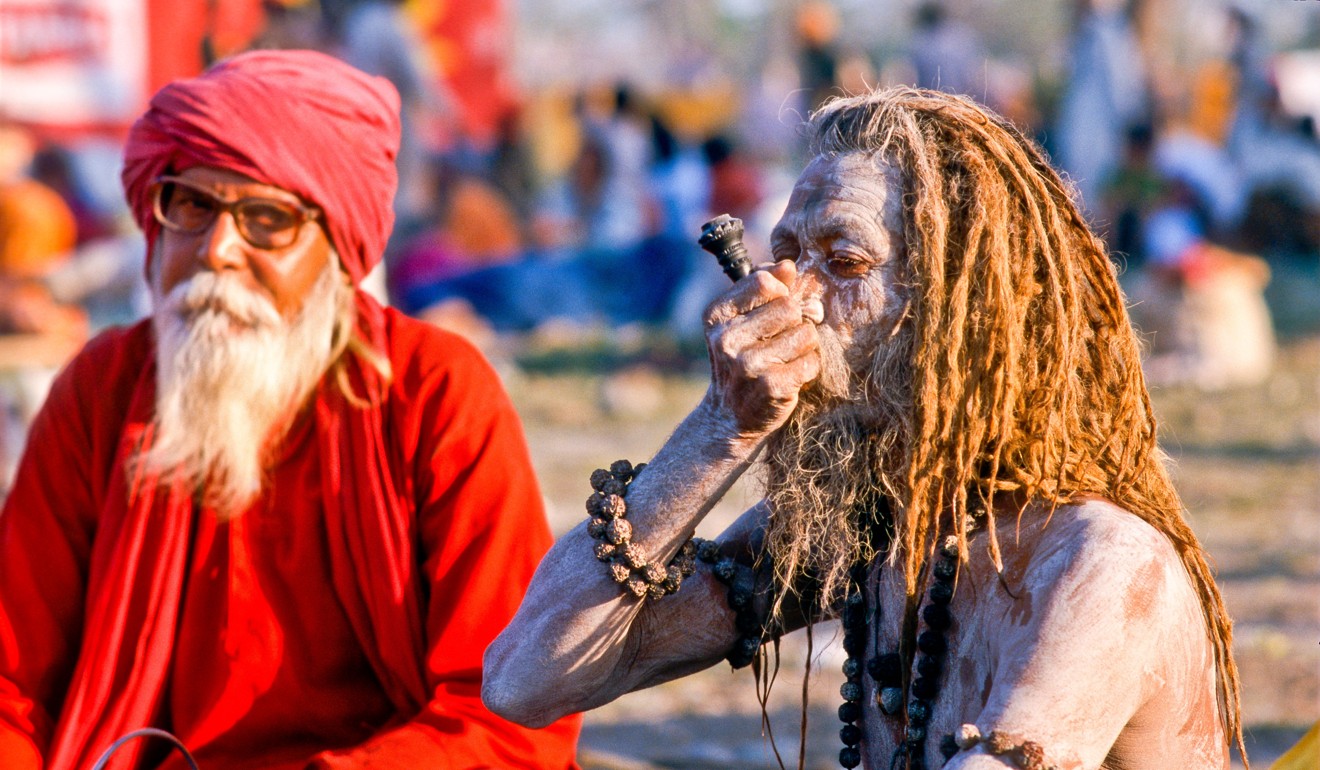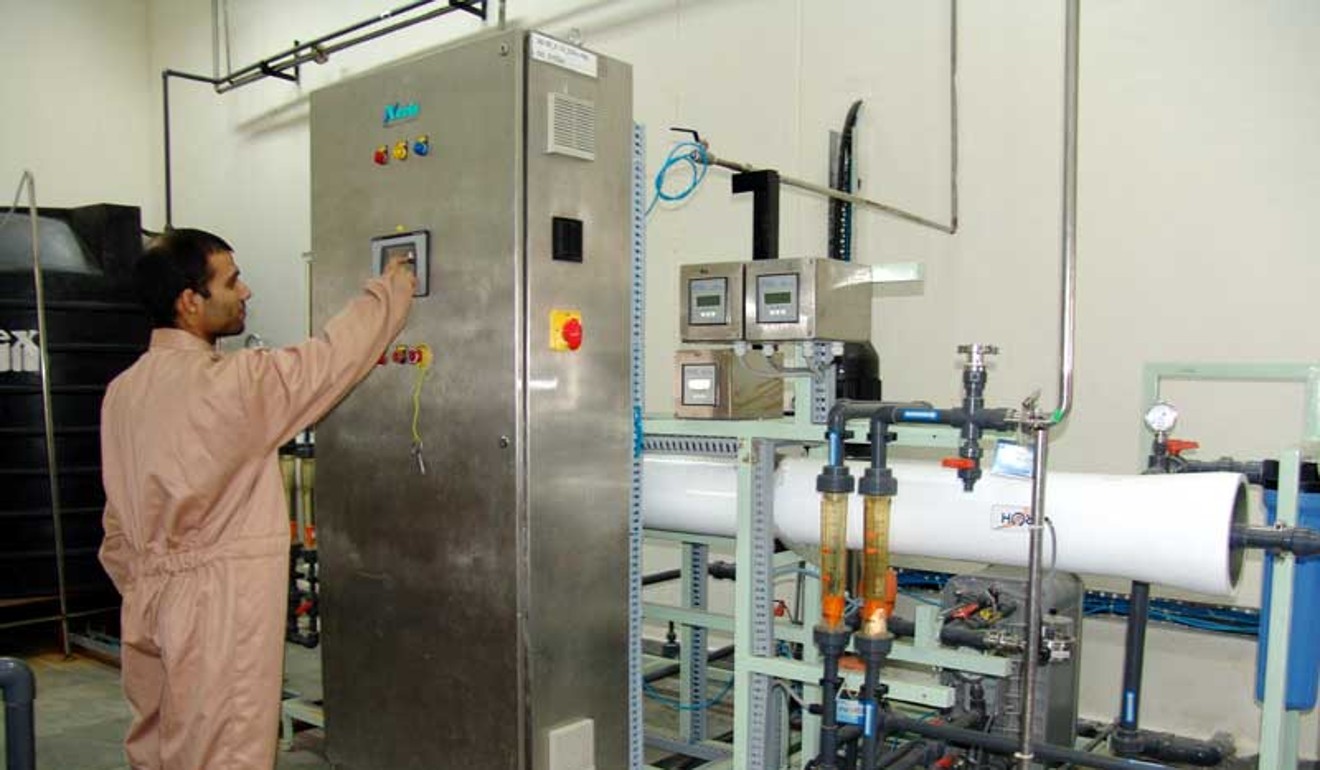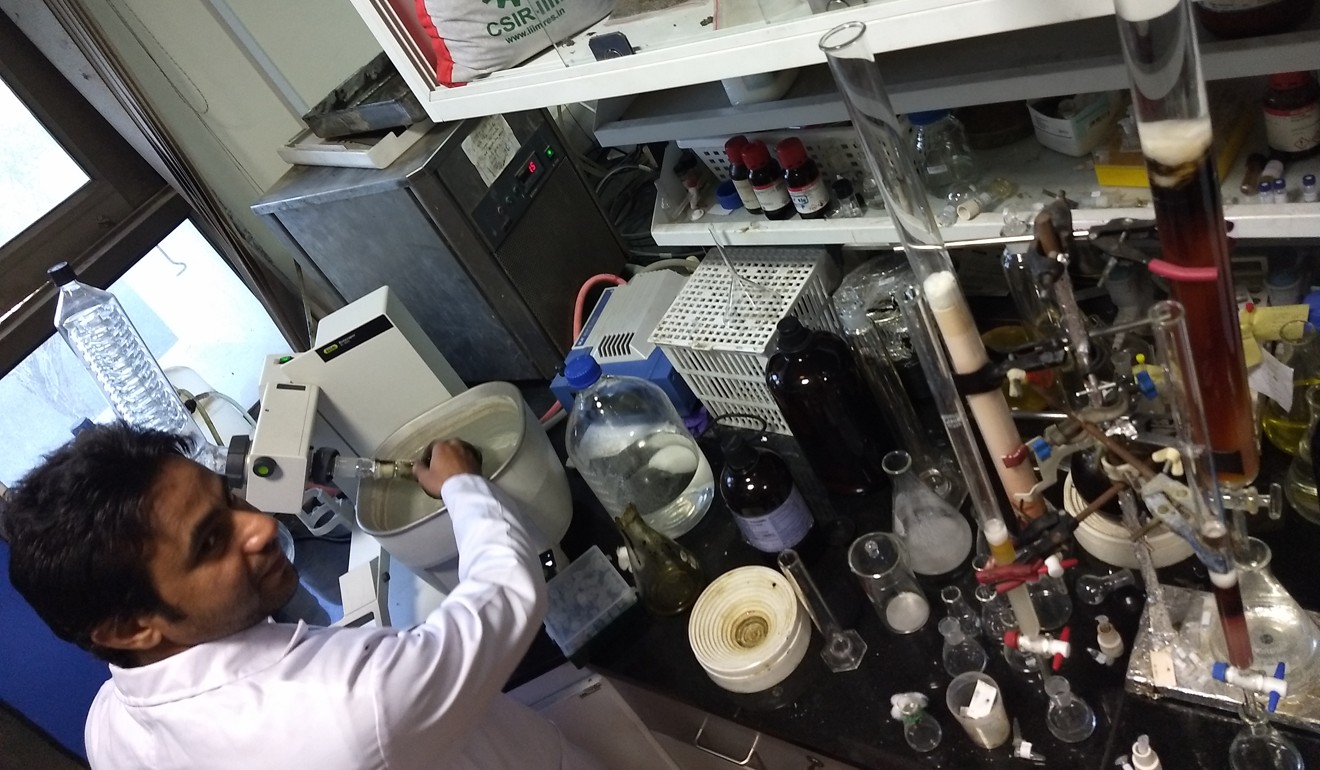
India’s history of cannabis use encourages scientists to explore new ways of using it as a legal painkiller
- Researchers at the Indian Institute of Integrative Medicine are working to create drugs to treat extreme pain in cancer patients
- They hope to persuade the government to relax current laws and regulate cannabis the way opium is regulated
There is less than half a hectare of land in the whole of India where the cannabis plant can grow legally. But that one acre in Jammu, in the country’s north, marks a new phase in its relationship with cannabis – a willingness to explore its potential to provide relief to sick Indians after decades of treating it as a taboo.
The land belongs to a government-owned lab called the Indian Institute of Integrative Medicine (IIIM), where scientists are growing the cannabis, and a sense of excited optimism prevails among the team. The institute is the first body to get a research licence from the government to grow cannabis to find out what medical use it offers for the treatment of severe pain, cancer, epilepsy, sickle cell anaemia, neurological disorders and mental health problems.
Green gold rush: Thailand, Malaysia race to legalise medical marijuana
Since getting the licence a year ago, scientists have identified and isolated several compounds, which have been tested on animals with “exciting” results. In a few months’ time, once these pre-clinical trials are over, the Institute will extract cannabidiol and produce oil or capsules which will be given to the Tata Memorial Centre cancer hospital in Mumbai so that it can start India’s first human clinical trials on cancer patients.
“The value of cannabis has been a part of the traditional ayurvedic system of medicine in India for 2,000 years, so we already have a body of scientific and traditional knowledge about it. But this research is about extending our understanding and about scaling it up to make it available to millions,” says Dr Abdul Rahim, head of planning and business development at the Institute.

For Rahim, the plant evokes wonder. “It is much, much more powerful than morphine. It can help in neurological disorders, in cancer, in arresting Alzheimer’s and a whole range of diseases. We can’t afford to delay,” he says.
All drugs obtained from the cannabis plant have an important ingredient called cannabidiol and another component called tetrahydrocannabinol. The latter provides a high, which is banned in many countries. But cannabidiol is one of the many compounds found in cannabis, or marijuana, that do not produce a high but have medical and therapeutic capabilities.
Growing cannabis is illegal in India, except for industrial purposes such as obtaining hemp. It is regarded as a drug with a high potential for misuse and abuse. No one is allowed to possess it, and consuming it can lead to a jail term of six months or a fine.

The institute’s acre is the only place in India where it is being grown legally for the purpose of research. However, the plant grows like a weed all over India, which is why it is impossible to stop its use. Villagers use the seeds in chutneys and the fibre for making clothes.
Cannabis has been written about in ancient texts and used both for rituals and festivals for more than 2,000 years. The spring festival of Holi, when Indians let their hair down by throwing colour on one another, is also when many people get high on “bhang”, derived from marijuana. It is either smoked or eaten in food.
Holy men regularly smoke it while seeking enlightenment. The Sanskrit word for cannabis is “vijaya”, meaning victory, and its healing properties have been documented in ayurvedic treatises. When treating severe pain, ayurvedic doctors prefer cannabis over opium because cannabis does not produce nausea, loss of appetite, or headaches.
Why Hong Kong is no gateway to China in legalising marijuana
In Hinduism, the god Shiva is depicted smoking marijuana in a hookah pipe. In earlier centuries, Indian soldiers took a drink of bhang before entering battle, much the same way as European soldiers took a glug of whisky. Even today, some construction workers use bhang at the end of a long day. In villages too, after the gruelling work of harvesting a crop is over, some farm hands smoke marijuana.
“It grows wild in my garden and all around here. We don’t make a habit of it but the men here use it to help them relax after a long day in the fields,” says Pushpa Devi, who lives in Bhimtal, north India.
In short, cannabis has been an integral part of Indian culture from antiquity and a trusted ingredient in traditional medicine. Yet while other countries have been exploring the medical use of marijuana in recent years and relaxing the regulations around it, India has been left behind – until now.

“We’re trying to generate medical evidence to justify the use of cannabis derivatives. Then we will try to persuade the government to relax the law and regulate cannabis the way opium is regulated,” says institute director Dr Ram Vishwakarma.
A conference in New Delhi last month indicated the change in heart among some sections of the medical and scientific community. A group of scientists and doctors urged the government to rethink the ban on marijuana and to relax the regulations, such as in Canada and the Netherlands, to allow cannabis-based medicines to be made available.
It is just possible that this government may be more inclined to tweak the regulatory regime than earlier ones. The ruling Bharatiya Janata Party likes to extol ancient Hindu traditions, while the government has promoted the use of traditional medicine systems. Cannabis advocates feel that if any Indian government would be open to change it might be this one.
My aunt was feeling depleted and in some pain after getting surgery, chemotherapy and radiation for her breast cancer. I gave her some cannabis and it has helped not just with the pain but in lifting her mood
At present, the only way some cannabis-based formulations are available is because of the grey area that allows ayurvedic medicines containing cannabis to be made and sold; clinical trials are not required for the sale of ayurvedic medicines.
A passionate proponent of medical marijuana, Sourab Agarwal, founder of the Medical Cannabis Foundation of India in Bhubaneswar, has a licence that allows him to make a few ayurvedic products using cannabis extract.
“Cannabis is marvellous because it has no toxicity. My aunt was feeling depleted and in some pain after getting surgery, chemotherapy and radiation for her breast cancer. I gave her some cannabis and it has helped not just with the pain but in lifting her mood,” Agarwal says.
The proposed Tata Memorial Centre trial on cancer will study whether cannabis can influence the outcome or long-term survival of cancer patients. Director Dr Rajendra Badwe says the human trials (expected to start by the end of March) using the compounds the institute provides will be strictly limited in scope and confined to a one-off use on the day of surgery to remove malignant tumours.
“My goal as an oncologist is to keep the tumour contained. Can cannabis put the tumour to sleep and reduce its exfoliating capability? It’s been seen in heroin addicts that their cells are sticky and hold together. That’s what I am looking for. Can I put the cells of the patient into a state of bliss through cannabis on the assumption that if the host can be put into a state of bliss, why not the cells? If the cells are in a state of bliss while the tumour is being removed, this will lower their antennae for survival,” he says.
Unlike some cannabis proponents, Dr Badwe believes it can only be used for short term and specific purposes, not for long-term pain relief. “Long term it is addictive and that isn’t right. If the trials are positive, I and others will be able to reduce deaths due to cancer,” he says.
For Agarwal, the planned human clinical trials are almost unnecessary. “I see no need to reinvent the wheel. There are 15,000 articles online on the efficacy of cannabis. More than half of US states have legalised marijuana so why are we so cautious?” he says.

Cautious or not, the excitement around this new exploration of cannabis is welcomed by Jahan Peston James, co-founder of the Bombay Hemp Company, which is helping the institute with cultivation, harvesting and extraction. James is looking forward to cannabis-based medicines providing relief to millions.
“For patients it will be a game changer. It’s not just the limitless possibilities of cannabis in treating some diseases. Rather it’s the fact that it can be affordable and accessible to millions of Indians, particularly as chronic diseases are on the rise,” James says.
The supply of morphine in India is stringently regulated – even for cancer hospitals – with the result that far too many poor Indians die in excruciating agony in rural areas where there is no medical care, much less palliative care. It means the availability of cheap pain relief from medical marijuana could certainly make a big difference.

But not everyone agrees. “Morphine is tried and tested, it’s the best and most effective pain reliever. What we need to do is to make morphine more easily available than it is. Cannabis has to wait until we see the results of the clinical trials, but based on what we know right now, it is not the way to go,” says Dr Mary Muckaden, president of the Indian Association of Palliative Care.
For Rahim, however, the sense of momentum around cannabis is undeniable – he just needs more than one measly acre.
Ayurveda solved his problems, so Singaporean launched Ayurvedic company
“We have applied to the government to get 40 more acres for growing it. We need it, not just for clinical studies but, if we end up needing to supply compounds to several hospitals at once, we need to have enough cannabis to meet that need,” he says.

